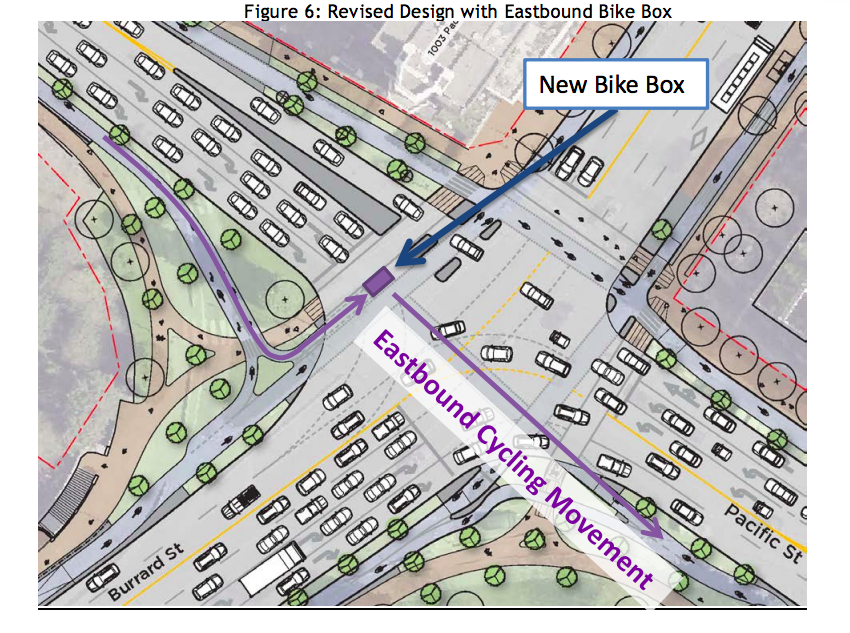
Vancouver City Council has approved plans to rehabilitate the Burrard Bridge, including upgrading bike and pedestrian lanes and installing suicide-prevention fencing.
The controversial proposal included removing one of three northbound lanes on the bridge to make room for another bicycle and pedestrian pathway and redesigning the Burrard Street and Pacific Street intersections to increase safety for cyclists.
On the east side of the bridge, the cement median will be moved down from the raised sidewalk to separate off a northbound vehicle lane that will be re-purposed into a one-way northbound bike lane.
The turning channel at the north end of the bridge onto Pacific and leading onto Hornby Street will also be removed, but the one lane will be doubled to allow two right turning lanes in its place. The right turning channel from Pacific onto the Burrard Bridge will also be removed and turned into two lanes. The new turning lanes will be controlled by traffic lights whereas the current system allows for vehicle merging at the drivers’ discretion.
The plan will also install suicide prevention fencing similar to those on the Second Narrows Bridge. Since 2006, seven people have died jumping from the Burrard Bridge, less than one person per year. Other bridges see more suicide instances, including the Lions Gate Bridge where 33 jumpers have died during the same period.
Some were displeased with the lack of consultation provided, especially in relation to the suicide barriers which were left out of the consultation process. Heritage Vancouver vehemently disagreed with the plan to build tall fencing, stating that it would “irrevocably alter” the appearance of the historic art-deco bridge.
City Councillor Heather Deal said the city will take the bridge’s aesthetics into account when designing the barriers.
“We’re going to be working really hard with the heritage community and others to ensure that the design is as compatible as possible with bridge,” she said.
The total cost of the project will be $35 million, which the city says will be necessary “to maintain an aging asset, improve safety, and achieve active transportation goals.” Construction will begin in 2016 and take roughly 18 months.

Image: City of Vancouver

Image: City of Vancouver

Image: City of Vancouver

Image: City of Vancouver

Image: City of Vancouver

